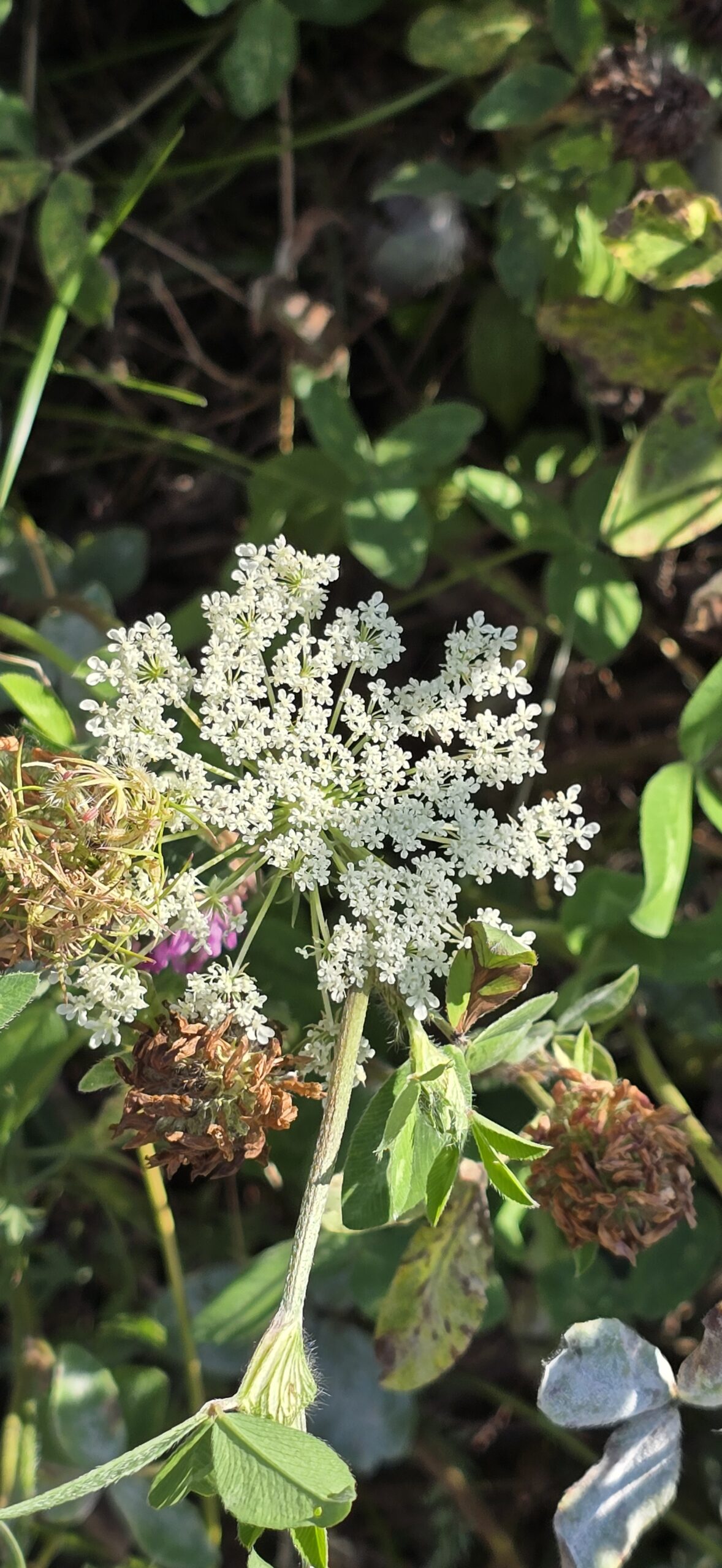Per Wikipedia:
Daucus carota, whose common names include wild carrot, European wild carrot, bird’s nest, bishop’s lace, and Queen Anne’s lace (North America), is a flowering plant in the family Apiaceae. It is native to temperate regions of the Old World and was naturalized in the New World.
Other interesting bits on the Wikipedia page include:
D. carota bears a close resemblance to poison hemlock
If used as a dyestuff, the flowers give a creamy, off-white color.
D. carota, when freshly cut, will draw or change color depending on the color of the water in which it is held. This effect is only visible on the “head” or flower of the plant. Carnations also exhibit this effect. This occurrence is a popular science demonstration in grade school.
And finally:
This species is also documented to boost tomato plant production when kept nearby, and it can provide a microclimate of cooler, moister air for lettuce, when intercropped with it. However, the states of Iowa, Michigan, and Washington have listed it as a noxious weed, and it is considered a serious pest in pastures. It persists in the soil seed bank for two to five years.


